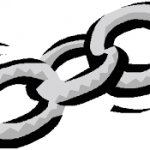Mastering Backlinks: A Comprehensive Guide to Boost SEO and Drive Traffic to Your Website
Backlinks are incoming hyperlinks from one webpage to another webpage.
They are important because search engines like Google use backlinks to determine the quality and authority of a website.
![]() Backlinks are considered a vote of confidence by search engines in the quality of your website's content.
Backlinks are considered a vote of confidence by search engines in the quality of your website's content.
The greater the number of high-quality backlinks your website has, the more likely it is to rank higher on the search engine results page (SERPs).
Backlinks drive traffic to your website. When someone clicks on a link from another website that leads to your website, they become a referral visitor. Referral traffic can be valuable because it's targeted and has the potential to lead to conversions.
Backlinks are also an essential part of SEO strategy. Therefore conduct a link Audit, to verify your website profile is clean, relevant, and contributes to search engine rankings.
New business websites may face difficulties in obtaining backlinks since so they might consider doing a link audit. This is a compressive analysis of a website’s backlink profile. It aims to identify and remove low-quality or spammy links that could harm the search engine ranking.
You can start the audit by:
Listing all the websites that currently point to your website. There are various tools to do this including Google Search, to paid tools like Ahrefs, or SEMrush. Analyze the quality of those found backlinks. Check for low, spammy, or irrelevant links that could decrease your SEO rankings. Remove the bad backlinks. You may have to contact the website owners and request them to remove the links or deny them with a disavow in Google Search Console.
Continue to monitor your backlinks regularly.
 High-quality content = High-quality backlinks.
High-quality content = High-quality backlinks.
High-quality content is content that is well-researched, well-written, and provides value to the reader. It is the type of content that other websites want to link to and share with their audience.
Another approach to gathering backlinks to your own website is through guest posting, which involves creating and publishing an article on a different website or blog. By publishing high-quality, original, and relevant content on reputable websites, you can build credibility and authority in your niche, which can lead to more backlinks and social shares.
The broken-link-building method is another effective technique for getting high-quality backlinks to link your website. Use a paid or free link checker tool to identify broken links on other websites that are relevant to your website. Offer the website owner a replacement that leads to your own website.
Don’t forget social media, which can be used to indirectly get backlinks to your websites.
We recommend you to:
Share your content to increase the likelihood that other users will see it and link to their own websites or blogs. Try to connect with influencers. If they like your content, they may link to it on their own website or share it with followers. Engage with your audience. Respond to comments, participate in conversations related to your industry, and join communities to share your knowledge and expertise. Use social media advertising to promote your content to a wider audience, increasing visibility and the potential for more backlinks.
Backlinks play a crucial role in website success and should be a vital component of any website's digital marketing strategy. Building high-quality backlinks require time and effort. It is not a quick process. However once done, search engine ranking, traffic, and website visibility will be increased. By combining these strategies, high-quality content, broken link building, and guest posting, you will build a strong backlink profile that will help drive long-term success for your website


Comments
Post a Comment